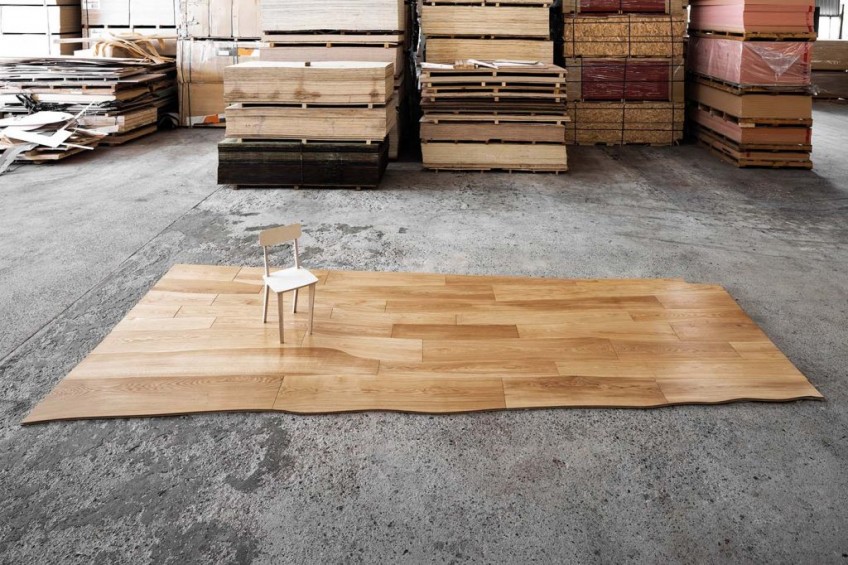From mushroom to bamboo charcoal: 6 next-gen sustainable flooring materials we love


AsiaOne has launched EarthOne, a new section dedicated to environmental issues — because we love the planet and we believe science. Find articles like this there.
Our living room experiences more traffic than ever in our new normal domestic environment. Today’s living room is also expected to be flexible and multi-functional; it may host a different set of activities throughout the day.
It could transform into a classroom, an office, a yoga studio, or a playroom depending on the time of day or the restriction imposed on us by the pandemic.

But throughout all these changes and shifts in functions, one thing remains: the floor material, which has also become one of the most important investments in your home. It needs to be durable, easy to maintain, and, taking into account the future of the planet: Eco-friendly.
Here are some of the most innovative floor materials in the market today. Some are new and others are a new take on the old.

What is mycelium, you ask? It is the filamentous structure that forms the base of a mushroom, which can be used as an adhesive that binds materials together, much like resin or glue, but more natural.
It has emerged as one of the hottest new materials with research, exhibitions, and design start-ups dedicated to it, well, mushrooming worldwide.
One of the most established mycelium-focused brands in the world is the Italian brand Mogu, which produces Mogu Floor, a collection of bio-based resilient tiles made with mycelium and agricultural waste such as corn crops, rice straw, coffee grounds, seaweed and clamshells.
These ingredients provide natural pigments visible on the tile’s surface, providing a unique and eye-catching and distinctly tactile finish. It is 100 per cent plastic-free and biodegradable too.
Technically a fast-growing grass rather than a hardwood tree, bamboo has emerged as the sustainable alternative to timber in recent years.
Bamco is an award-winning local company that produces bamboo charcoal flooring – a first in Singapore.
The company’s patented BamcoFlor is a 6mm-thick plank made of four layers of material that include a core layer made of bamboo that has been powderised into a charcoal compound through high temperatures, a decorative shield, a protective outer layer and a base layer for cushioning.
Waterproof, durable, non-toxic, stain and fire-resistant, as well as 100 per cent recyclable, BamcoFlor is available in six colourways. A thinner 4mm version BamcoLite is also available in four colourways.
Are you a diehard natural timber lover? Do not despair. There still are excellent sustainable natural timber out there. One of them is the River Floor timber flooring carried by local material innovative material purveyor Panelogue.
Produced in Latvia, River Floor is a live edge timber flooring crafted using advanced machining tools in forms that minimise the waste from the natural logs, resulting in a live-edge, irregular pattern depending on the shape of the natural wood.
The conventional conversion of tree logs to homogeneous timber flooring ranges between 40 to 60 per cent, while the conversion rate of machine-aided live edge timber planks is significantly higher. The 6mm- thick flooring modules are custom-shaped according to the dimension of your space, so you’ll have a truly unique flooring pattern.
For those seeking the look and feel of natural wood without the baggage of deforestation, engineered wood is a fantastic choice.
Local brand Onewood produces Homogeneous Reconstituted Timber (HRT), a hardwood-quality solid timber made by upcycling wood fibre from fast-growing plantation trees.
HRT is produced in a handsome premium large size that, if we’re talking about solid timber, can only be achieved by cutting down an 80 to 100-year old hardwood tropical tree.
It is also certified by Singapore Green Label and Singapore Green Building Council. It has dimensional stability, durability and a host of intrinsic properties like fire-, termite- and water resistance that make it ideal for flooring and decking.
While we still covet natural stones like marble and granite, we’ve also acknowledged that these are finite resources that should be regulated. Thank the industry for coming up with a more sustainable option: engineered stones.
Each brand calls its engineered stones with different trademarked names, but essentially they are compact surfaces made with a variety of natural minerals that may contain resin.
One popular example of this material is Dekton, the ultra-compact surface from Spanish brand Cosentino. The only known certified carbon neutral engineered stone, Dekton is virtually indestructible and 100 per cent recyclable. It is available in a myriad of colours and a large format.
“Dekton’s large formats can cover an area up to 320cm x 140cm,” says Pablo Abad, regional director for Cosentino (South-east Asia). “Which translates to faster installation with fewer joints for a seamless design, and less manpower.”
There is nothing like terrazzo to imbue our spaces with its nostalgia-inducing, confetti-like patterns. Did you know that this nostalgic material often uses post-consumer waste like glass bottles, car windows, laboratory glass and other reclaimed glass?
[[nid:528629]]
While we do not generally have a commercially produced terrazzo flooring that uses recycled glass yet, individual designers are taking initiatives to collect glass waste for their projects through community platforms like Zero Waste SG.
We also have a selection of great terrazzo tiles from overseas brands, like the Italian terrazzo tiles carried by local company Futar.

This article was first published in Home & Decor.